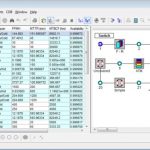Using a System to Record, Report And Eliminate Defects
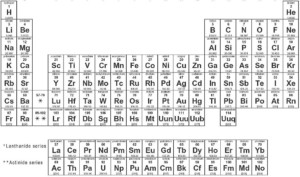 Why is that some organization seem to break the reactive cycle and others don’t? After all most organizations have a PM program and some form of a planning and scheduling program right? The key difference between those that do is their ability to use their failure data and systematically eliminate defects and issues from the processes and equipment. This doesn’t mean adding a new PM everytime some fails, which just won’t work.
Why is that some organization seem to break the reactive cycle and others don’t? After all most organizations have a PM program and some form of a planning and scheduling program right? The key difference between those that do is their ability to use their failure data and systematically eliminate defects and issues from the processes and equipment. This doesn’t mean adding a new PM everytime some fails, which just won’t work.
To eliminate the defects and issues, the organization needs to collect meaningful data to analyze and act on. This is where FRACAS comes in. [Read more…]
 Ever wonder how some of the worst industrial disasters occur? It is usually the result of multiple failures. Failure of the primary system and failure of the protective systems. Ensuring the protective system(s) are not in a failed state should be of utmost importance to any organization. But how often should we test the protective systems to ensure the required availability?
Ever wonder how some of the worst industrial disasters occur? It is usually the result of multiple failures. Failure of the primary system and failure of the protective systems. Ensuring the protective system(s) are not in a failed state should be of utmost importance to any organization. But how often should we test the protective systems to ensure the required availability? Ever wonder how some organizations make their vibration or thermographic program work, and not only work but deliver huge results to their organization? They use a systematic approach to establishing the correct frequencies of inspection. Establishing the correct frequencies of maintenance activities is critical to the success of any maintenance program. Too infrequently and the organization is subjected to failures, resulting in poor operational performance. Too frequently, and the organization is subjected to excess planned downtime and an increased probability of maintenance induced failures.
Ever wonder how some organizations make their vibration or thermographic program work, and not only work but deliver huge results to their organization? They use a systematic approach to establishing the correct frequencies of inspection. Establishing the correct frequencies of maintenance activities is critical to the success of any maintenance program. Too infrequently and the organization is subjected to failures, resulting in poor operational performance. Too frequently, and the organization is subjected to excess planned downtime and an increased probability of maintenance induced failures.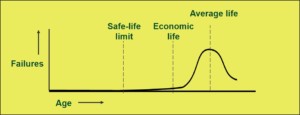 Think about your maintenance program. How often are your PMs scheduled? How were those frequencies established? If you are in the majority, the chances are that the frequencies were either established from the OEM manual, or by someone in the department without data.
Think about your maintenance program. How often are your PMs scheduled? How were those frequencies established? If you are in the majority, the chances are that the frequencies were either established from the OEM manual, or by someone in the department without data. This formula is used to establish the economic life of the component, balancing the cost of the downtime vs. the cost of the replacement.
This formula is used to establish the economic life of the component, balancing the cost of the downtime vs. the cost of the replacement.
 Most maintenance and reliability professionals have seen the six failure patterns (or failure hazard plots), described by Nowlan and Heap. In case you are unfamiliar with them, you can learn more about them
Most maintenance and reliability professionals have seen the six failure patterns (or failure hazard plots), described by Nowlan and Heap. In case you are unfamiliar with them, you can learn more about them  Imagine working in an organization that does not provide training or has zero tolerance to taking a risk, trying something new and failing. Or it is expected that you have all of the answers and do not need any assistance ever. Sound familiar? If it does, how is the performance of your plant? Chances are it is not as good as it could be. This example is great at illustrating what a learning culture does not look like.
Imagine working in an organization that does not provide training or has zero tolerance to taking a risk, trying something new and failing. Or it is expected that you have all of the answers and do not need any assistance ever. Sound familiar? If it does, how is the performance of your plant? Chances are it is not as good as it could be. This example is great at illustrating what a learning culture does not look like.

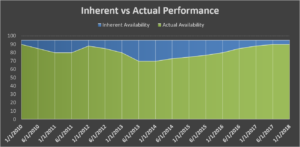 I recently had the opportunity to teach a Body of Knowledge course, which was full of great questions from the students. One of the questions was about inherent vs. actual availability. This had me thinking about the choice that organizations make on how they choose to run their business and more importantly, their resources.
I recently had the opportunity to teach a Body of Knowledge course, which was full of great questions from the students. One of the questions was about inherent vs. actual availability. This had me thinking about the choice that organizations make on how they choose to run their business and more importantly, their resources.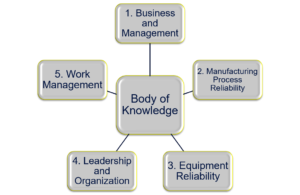 If you have been in maintenance or reliability for a period time, there is little doubt that you haven’t heard about the SMRP Body of Knowledge yet. The SMRP body of knowledge is more than just a document that outline of topics related to maintenance & reliability. It is a framework in which the CMRP exam is based on and can be used as a framework to improve your facility’s performance.
If you have been in maintenance or reliability for a period time, there is little doubt that you haven’t heard about the SMRP Body of Knowledge yet. The SMRP body of knowledge is more than just a document that outline of topics related to maintenance & reliability. It is a framework in which the CMRP exam is based on and can be used as a framework to improve your facility’s performance.